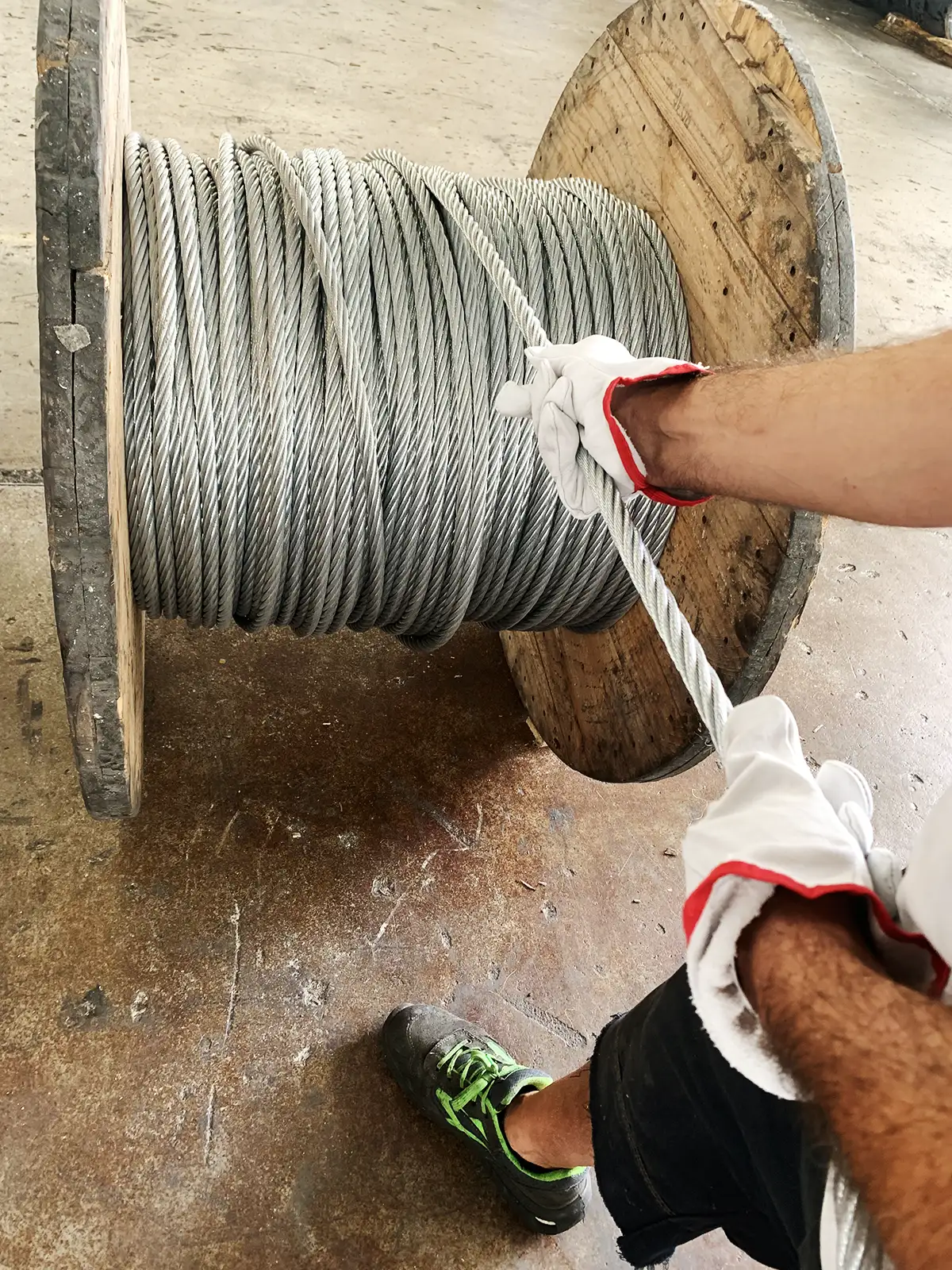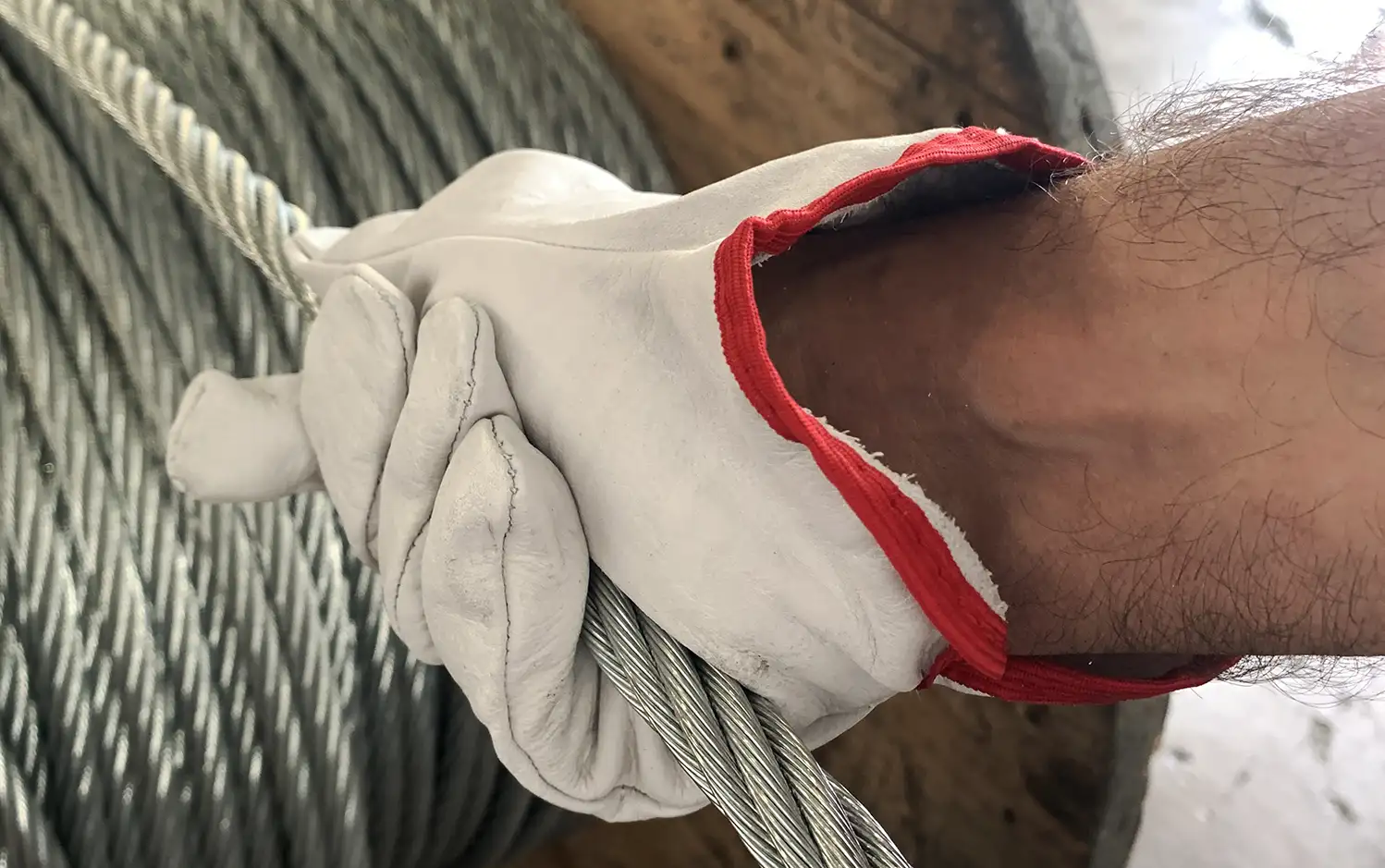Steel wire rope handling: safety first!
Steel wire ropes¹ are used in different sectors and areas, such as construction, the maritime industry, heavy lifting, and more. To ensure safe use of steel wire ropes in different contexts, it is essential to observe a set of guidelines and procedures aimed at reducing risks to operators, optimizing the efficiency of the rope and increasing its durability.
Here are some general recommendations to follow to operate safely.

- Regular Inspection: Before use, carefully inspect steel ropes for signs of wear, corrosion or damage. If a rope shows signs of deterioration, it should be replaced immediately. All mechanical parts and equipment in contact with the rope that contribute to its ultimate use should also be regularly inspected and maintained. Dirty parts must be kept clean, in good condition and, if necessary, lubricated; deteriorated parts must be promptly replaced.
- Maximum Load: Always observe the maximum allowable load and the rope-specific safety factor. These parameters must be strictly adhered to.
- Protection of Rope Ends: Ensure that the ends of steel wire ropes are always protected and that there are no loose or protruding wires.
- Use of Accessories: When securing loads or tying objects, use appropriate accessories such as sleeves, clamps, hooks or rings to ensure that the rope is securely connected. Always use compliant accessories.
- Ligatures: Avoid knotting steel ropes, as this can greatly weaken their strength. Use tight joints or bindings appropriate for the type of rope, load and end use.
- Personal Protection: Anyone working with steel ropes should wear appropriate protective clothing, such as cut- and impact-resistant gloves, safety footwear and other PPE in compliance with applicable regulations.
- Marking: Use clear and appropriate signage to indicate areas where steel ropes are being used to prevent non-experts from getting too close and taking risks.
- Training: Ensure that everyone working with steel ropes has received the proper training on safety procedures and proper rope handling.
- Maintenance: Carry out periodic maintenance of steel ropes, including cleaning and lubrication if necessary, to keep them in good condition, improve their functionality, increase their service life and reduce risks to operators.
- Safe Lifting: When lifting heavy loads with steel ropes, ensure that lifting is done evenly and that the load is well balanced. Avoid sudden or abrupt movements. Always use compliant accessories.
- Reports of Accidents: Any accidents, damages or other problems with the steel wire ropes and related accessories and parts should be reported and recorded immediately for investigation and correction.
- Compliance with Regulations in force: Ensure that all steel rope use activities comply with local, regional and national safety regulations in force.
These are just some general guidelines for steel rope safety.
Exact procedures may vary depending on the industry and the specific context in which the ropes are used.
It is essential to consult the specific guidelines and regulations for your industry and ensure that all workers are properly trained and aware of the risks associated with specific operations.

We conclude this vademecum by pointing out that the website of the Italian National Unification Body (UNI) points out that the “danger of accidents during lifting operations is sometimes underestimated by users but, fortunately, thanks to the high safety coefficients adopted (the safety coefficient is the ratio between the minimum breaking load and the safe working load, or safety capacity, of a lifting component) the number of such accidents remains limited.” Specifically with regard to steel ropes, “the minimum coefficient allowed by law is 5:1, increased by 10 percent to 5.5:1 in the case of ropes wound on multi-layer drums.” And these values, established by the first Machinery Directive implemented in Italy in 1996, combined with correct operating methods, can guarantee “the absolute safety of lifting operations.”².
- https://en.wikipedia.org/wiki/Wire_rope
- https://www.puntosicuro.it/movimentazione-carichi-C-44/movimentazione-carichi-il-rischio-funi-AR-11390/